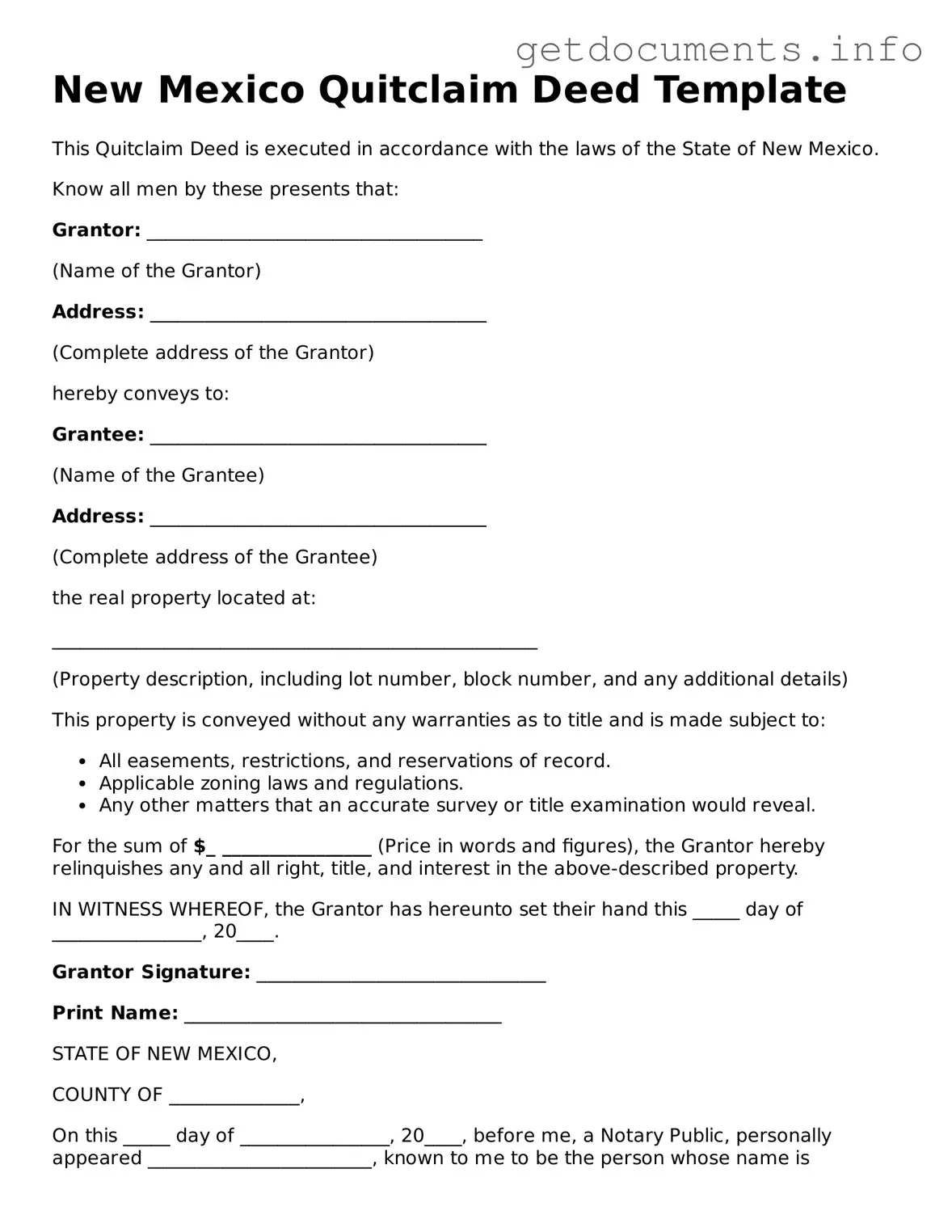In the realm of real estate transactions, understanding the various tools available for transferring property rights is essential. One such tool is the Quitclaim Deed, particularly relevant in New Mexico. This form allows a property owner, known as the grantor, to relinquish any claim they may have to a property without guaranteeing the validity of that claim. Unlike other types of deeds, the Quitclaim Deed does not assure the grantee— the individual receiving the property— of clear title or ownership rights. Instead, it serves as a straightforward mechanism for transferring interests, often utilized in situations like divorce settlements, family transfers, or when property is conveyed between acquaintances. While the Quitclaim Deed is relatively simple to execute, it is vital for both parties to understand its implications fully. The form typically requires the names of the grantor and grantee, a legal description of the property, and the signatures of those involved. Additionally, it may need to be notarized and recorded with the county clerk to ensure public notice of the transfer. By grasping the nuances of the Quitclaim Deed, individuals can navigate property transfers with greater confidence and clarity.
